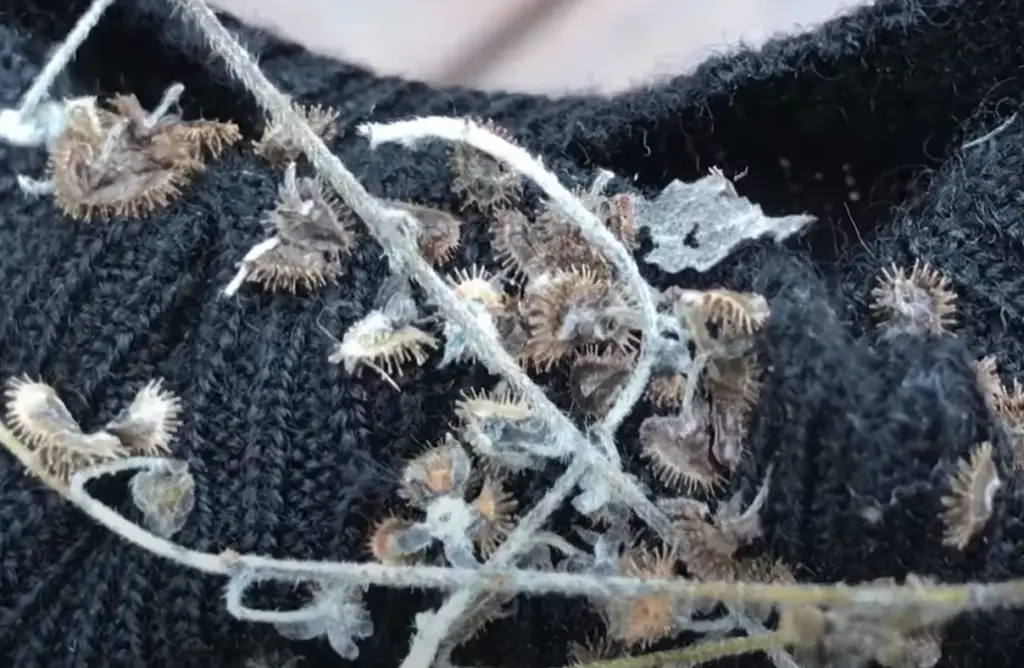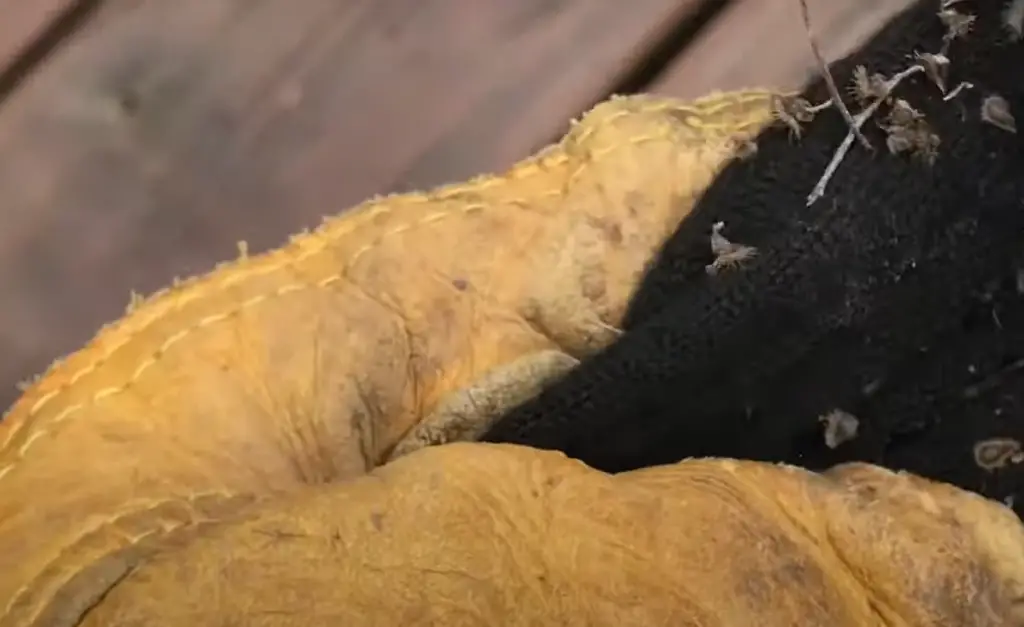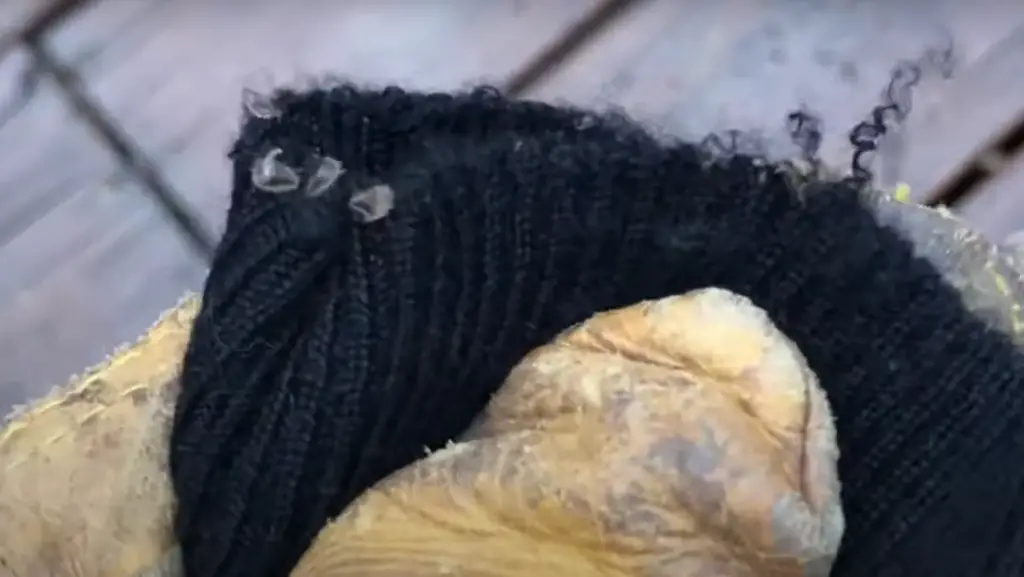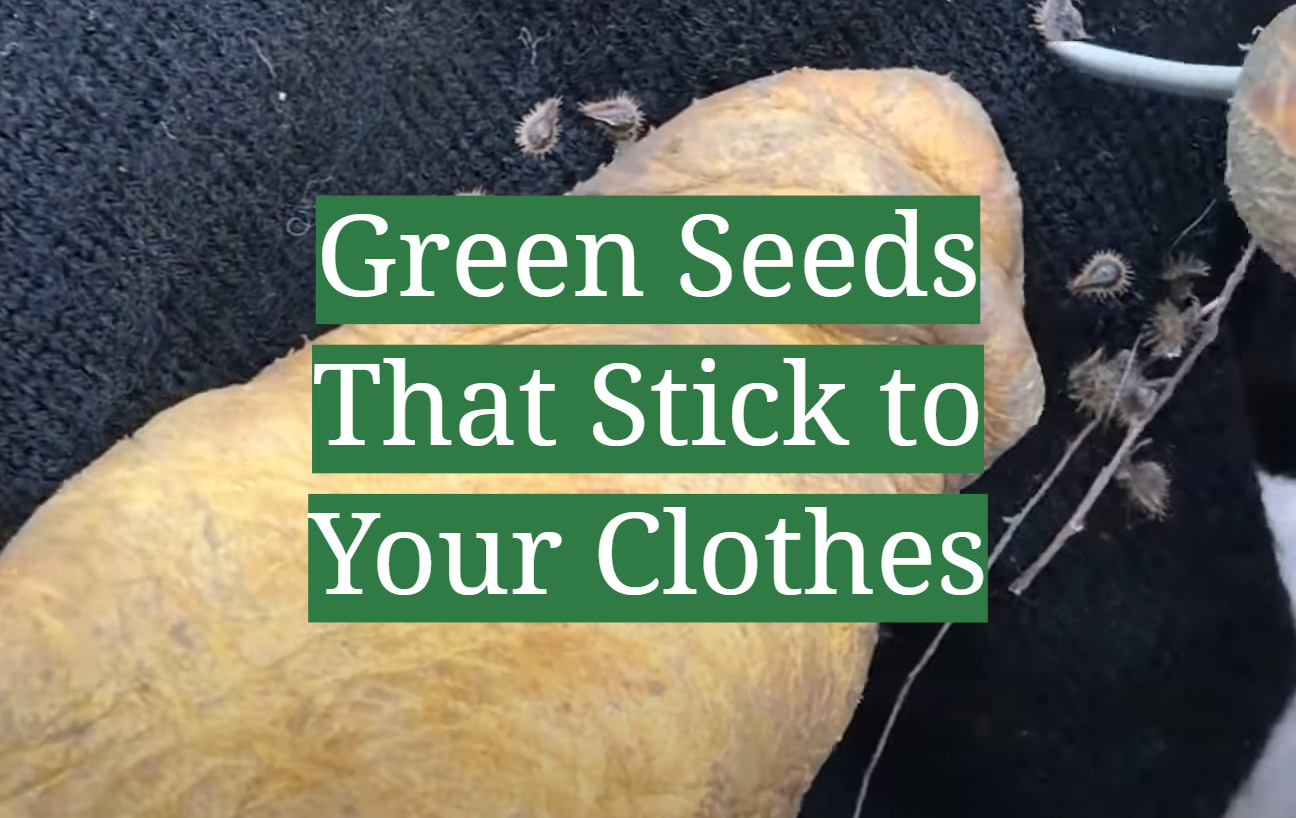Green seeds, which are also known as weed or grass seed heads, are a common problem. They cling to clothing and can be difficult to remove. This article will provide helpful tips on how to prevent green seeds from sticking to your clothes and how to remove them if they do stick. We’ll also answer some of the most frequently asked questions about this issue.
What are Hitchhiker Weeds?
Hitchhiker weeds, or green seeds, are small sticky seed heads that can attach to clothing when you walk through them. They are usually found in grassy areas and along paths.
The most common hitchhiker weed is cockleburr (Xanthium strumarium). It has small yellow-green burrs with two long spikes. These burrs are the seed pods, and they can stick to clothing (and human fur) very easily.[1]
Sandbur Weed (Cenchrus longispinus)
One of the most common types of green seed head is the Sandbur Weed, or Cenchrus longispinus. It grows in lawns, gardens, and fields throughout much of North America.
Houndstongue Weed (Cynoglossum officinale)
Houndstongue weed is a common plant that produces sticky green seeds. These small, round seeds have a spiny surface that makes them difficult to remove from clothing.

The seed heads are usually found in grassy areas or along roadsides and can be spread by mowing lawns. If you spend time outside, these seeds can easily cling to your clothing.
Enchanter’s-nightshade (Circaea lutetiana)
Enchanter’s-nightshade is a common plant found in lawns and gardens. It produces small, round green seeds which have an adhesive coating that easily sticks to clothing. When these seeds come into contact with clothing, they become even more difficult to remove.
Beggar’s lice (Tick Trefoils), Desmodium spp.
Beggar’s lice (tick trefoils) are a common weed that grows throughout the United States in pastures, roadsides, ditches, and other disturbed areas. These plants have small green seed heads that easily stick to clothing. The best way to prevent these sticky seeds from attaching to your clothes is to wear protective clothing when working in areas where these weeds are known to grow. Long pants, long sleeves, and closed-toe shoes can all help keep the seeds from attaching.
Krameria (Krameria grayi)
Krameria is a type of plant native to the western United States. It has several characteristics that make it particularly suited for sticking to clothing:
- Its seeds are shaped like tiny hooks, which makes them cling to fabric;
- The plants have long, narrow leaves that act as sails and catch passing breezes;
- They grow in clusters, making it easy for multiple seeds to attach to a single article of clothing.
Beggarticks (Bidens pilosa)
Beggarticks or Bidens pilosa are a type of weed with green, sticky heads. The seeds from these weeds can easily adhere to clothing and pet fur. Although they can be unsightly, Beggarticks are not harmful and will usually fall off on their own after a few days.
Hedge Parsley (Torilis arvensis)
Hedge parsley is the most common type of weed that produces green seeds which stick to clothes. The hedge parsley plant grows erect and has small, white flowers with yellow centers. It can be found in wastelands, disturbed soil, meadows, grasslands and cultivated fields.[3]
Palmer’s Grappling Hook (Harpagonella Palmeri)
Palmer’s Grappling Hook, also known as Harpagonella Palmeri, is a type of green seed that often clings to clothing.
Sandbur (Cenchrus)
Sandbur is a type of grass that produces seed heads with two or three stiff spikes on each one. These seeds easily stick to fabrics and can be difficult to remove.

To avoid sandbur from sticking to your clothes, try to stay away from places where it grows. When possible, wear long pants and sleeves when walking through these areas.
Hound’s-tongue (Cynoglossum officinale)
Hound’s-tongue is a weed that has tiny, green seeds. These seeds are sticky and adhere to clothes with ease, causing them to be difficult to remove. Luckily, there are some steps that you can take to prevent these pesky seeds from sticking in the first place.[1]
Common burdock (Arctium minus)
The most common green seed that sticks to clothes is the burdock or ‘thistlehead’, which belongs to the plant family Arctium minus. It has a distinctive tufted, spiny head and can be found in urban areas as well as rural regions. The seed heads are sticky and easily attach themselves to clothing or fur when brushed against.
Calico aster (Symphyotrichum lateriflorum)
This particular species of aster produces green seed heads that can easily stick to your clothing.
Calico aster is a common weed and grows in many areas around the world.Jumping cholla (Opuntia bigelovii)
Jumping cholla, a type of cactus found in the desert Southwest United States, is a major source of green seed heads. The plant can grow up to six feet tall and has small yellow flowers in springtime. Its round, spiny fruits contain tiny black seeds that are sticky and cling to clothing when brushed against.[1]
Puncturevine (Tribulus terrestris)
Puncturevine is a low-lying annual plant that produces spiny green seed pods. The seeds have sharp barbs, which makes them difficult to pluck and remove from clothing without causing damage.[2
Beggarticks (Bidens)
Beggarticks (Bidens) are another type of hitchhiker weed. They have small, round seed heads that attach to clothing and fur with their little hooked spines. Beggarticks can be found in a number of different habitats, including gardens, fields, and roadsides.
Stick-tight Harpagonella (Harpagonella palmeri)
Stick-tight harpagonella (Harpagonella palmeri) is another type of hitchhiker weed. This plant has smaller, rounder burrs that are reddish-brown in color and can also stick to clothing. Stick-tight harpagonella grows in sandy soils and along roadsides.
Preventing Green Seeds From Sticking To Your Clothes
The best way to prevent green seed heads from sticking to your clothes is to wear protective clothing when you’re outside. Long pants and long-sleeved shirts are a good option. If the weather is hot, choose lightweight fabrics that will help keep you cool while providing protection from weeds.

If you can’t or don’t want to wear long pants and sleeves, you can also apply a preventative to your clothing. Products such as Preen Garden Weed Preventer are widely available and will help stop weed seeds from sticking to fabric.
Another option is to treat the areas where the weeds grow with an herbicide or pre-emergent, which will help prevent the weeds from growing in the first place.
Removing Green Seeds That Have Already Stuck To Your Clothes
If you’ve already encountered weed seed heads that have stuck to your clothing, the best way to remove them is with a lint roller. These handy devices are great for picking up small particles like plant matter and pet hair.
Another option is to use a vacuum cleaner. This method can be particularly effective if you have a lot of green seeds to remove. Simply place the clothing item on a hard surface and vacuum it up.[2]
FAQ
What seeds stick to fur?
The most common types of seeds that stick to fur are Beggarticks (Bidens pilosa), Hedge Parsley (Torilis arvensis), Palmer’s Grappling Hook (Harpagonella palmeri) and Sandbur (Cenchrus). These weeds have sticky seed heads which easily attach themselves to pet fur.
What plant has seeds that stick to you?
Several plants have seeds that stick to clothing and fur, including Hedge Parsley (Torilis arvensis), Palmer’s Grappling Hook (Harpagonella palmeri), Sandbur (Cenchrus) and Hound’s-tongue (Cynoglossum officinale). Beggarticks (Bidens) and Common Burdock (Arctium minus) also have seeds that can cling to clothing.
Have you seen seeds that stick to your clothes?
Yes, there are a number of plants that have seeds that stick to clothing and fur. These include Hedge Parsley (Torilis arvensis), Palmer’s Grappling Hook (Harpagonella palmeri), Sandbur (Cenchrus) and Hound’s-tongue (Cynoglossum officinale). Beggarticks (Bidens) and Common Burdock (Arctium minus) also have seeds that can cling to clothing.
What seed looks like cotton?
The most common seed that looks like cotton is Common Burdock (Arctium minus). This plant produces spiny, green seed heads that can easily stick to clothing and fur. Another similar-looking seed is Calico Aster (Symphyotrichum lateriflorum), which also has green seed heads that are sticky and cling to clothing when brushed against.
What are the little prickly things that stick to your clothes?
The most common “prickly” seed heads that stick to clothing are those of the Beggarticks (Bidens) plant. These have small, round seed heads which attach to clothing and fur with their little hooked spines. Other plants such as Common Burdock (Arctium minus), Calico Aster (Symphyotrichum lateriflorum) and Jumping Cholla (Opuntia bigelovii) also produce seeds that stick to clothing.
Is cotton spiky?
No, cotton is not prickly. The seed that most resembles cotton is the Common Burdock (Arctium minus).

This plant produces green, spiky seed heads that easily adhere to clothing and fur. Another seed that bears a similar appearance is the Calico Aster (Symphyotrichum lateriflorum), with sticky, green seed heads that cling to clothing upon contact.
Is cotton a false fruit?
No, cotton is not a false fruit. A false fruit is an accessory part of the plant that only appears to be a fruit. For example, the strawberry’s achenes (the tiny seed-like objects on its surface) are actually accessory parts and not true fruits. Cotton, on the other hand, is made up of fibers derived from the cotton plant’s seed bolls.
Is cotton a seed hair?
No, cotton is not a seed hair. A seed hair is an accessory part of the plant that resembles a single strand of human hair. For example, the fruits of some nightshade plants (such as tomatoes and potatoes) are covered in fine hairs known as trichomes. Cotton, on the other hand, consists of fibers derived from the cotton plant’s seed bolls.
Is cotton seed cotton?
No, cotton seed is not cotton. Cottonseed refers to the seeds of the cotton plant, which are used to produce oil or animal feed. The fibers from these seeds can also be used in a variety of consumer products such as fabric and stuffing. Cotton, on the other hand, consists of fibers derived from the cotton plant’s seed bolls.
Useful Video: The Best Way to Remove Sticky Seeds (Sticker Burs or Burrs) from Clothing
Conclusion
Green seed heads can easily stick to clothing and fur, making them a nuisance for gardeners and outdoor enthusiasts alike. The best way to prevent green seeds from sticking is by wearing protective clothing or applying a preventative to your clothing. If the weeds have already stuck, lint rollers and vacuum cleaners are great options for removing them. By understanding what plants produce these sticky seeds and taking the necessary precautions, you can minimize the amount of green seed that clings to your clothes.
Periodic maintenance such as weeding or mulching the area can also help reduce the number of weeds in your garden. Regularly clearing away dead plants and other debris will deprive weed seeds of a viable place to germinate and grow. Additionally, using a weed preventer such as Preen Garden Weed Preventer can help keep weeds from growing in the first place. With these tips and tricks, you’ll be sure to minimize the number of green seed heads that stick to your clothing.
References:
- https://www.fallsgarden.com/weeds-that-stick-to-clothes/
- https://www.gardeningknowhow.com/plant-problems/weeds/types-of-hitchhiker-plants.htm
- https://microveggy.com/plants-that-sticks-to-your-clothes/










Leave a Reply
View Comments